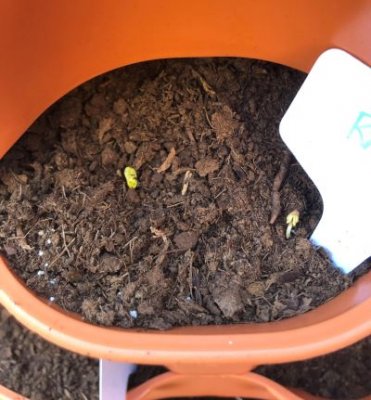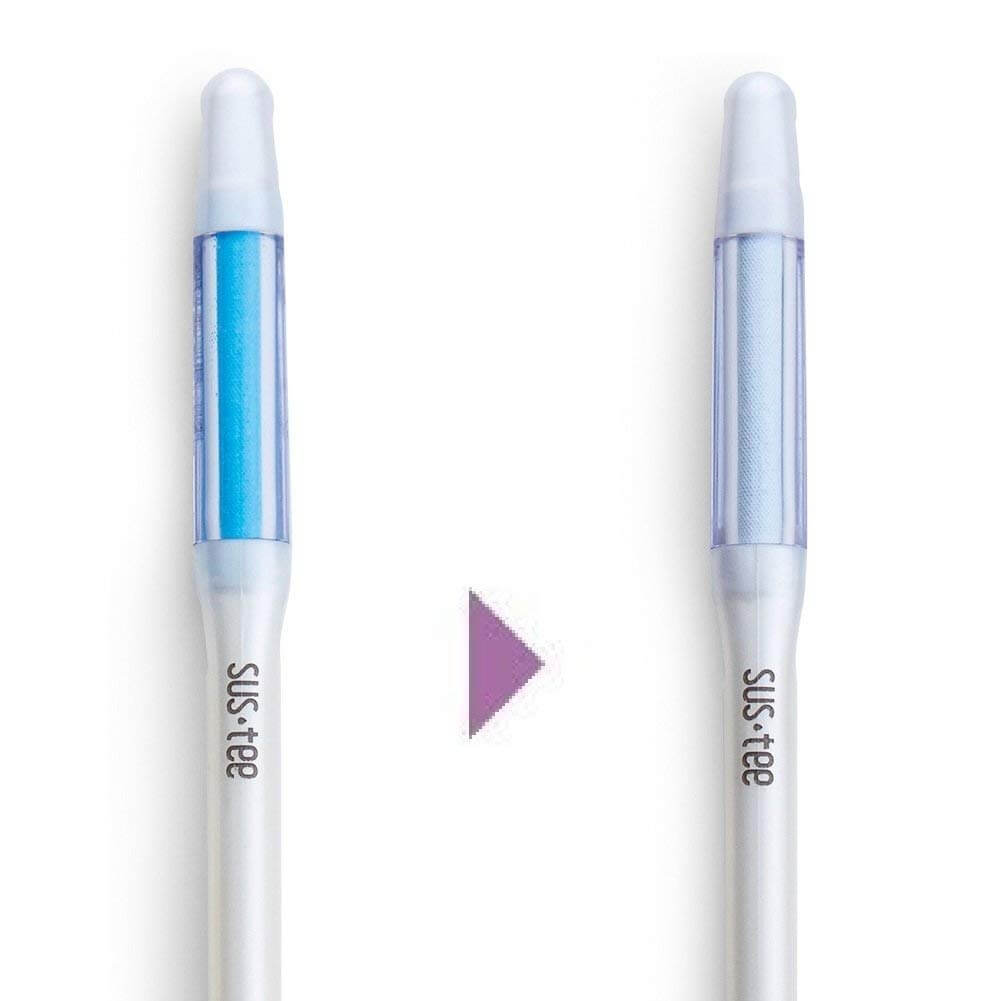How much should you water during summer?
Depending on where you live, the height of summer can get hot, hot, HOT!!
While we're enjoying the AC and sipping on lemonade, it's important to keep an eye on your summer herbs and vegetables. How much sun is too much? How do you know your plants are getting enough water? And even worse, what happens if you over-water your Garden Tower® 2?
Today, we're taking a look at the best ways to water your outdoor plants during summer.
What are the signs that my plants need more water?

When the soil is this dry in your Garden Tower® 2, it's definitely time to water!
Before we get started, let's talk about the warning signs that your plants aren't getting enough water. A plant that is too thirsty might show:
- Shriveled leaves
- Yellow, white, or brown coloring (instead of green)
- Limp stems
- Petals or leaves falling off
- Dry or flaking leaves
Furthermore, the soil around a plant that's not getting enough water will be very dry to the touch.
Soil that has visibly shrunk away from the plants or sides of your garden container is WAY below the minimum moisture level for updake by plants (re-wetting this soil will take some time, as potting soil becomes hydrophobic as it dries excessively). And now that you know the warning signs of dehydration in plants...
Here are eight tips to keep your summer produce growing and glowing all season long:
1. Know your plants' unique watering needs.
Plants need different watering routines depending on what they're planted in. For example, your flower beds won't have the same water needs as your potted tomato plant or the herbs in your Garden Tower® 2. In general, potted and container plants tend to dry out more quickly than those planted directly in the ground. This means you'll need to water them a few extra times each week! For plants in a container system, like the Garden Tower® 2, it's best to water in the early morning or early evening. This gives the root systems time to pull in much-needed moisture before the summer heat dries out the soil. Plus, watering early or late allows your plants to dry off from a dousing if there's excess water collecting on the leaves or stems. This keeps fungus and other water-lowing growths from threatening your harvest.
2. Allow for good drainage.
Especially during the summer, the soil needs somewhere for excess moisture to go. In a container system like the Garden Tower® 2, excess moisture can cause build-up that leads right to mold and fungus. A good indicator of healthy watering is the feel of the soil -- decently moist soil might stick to your fingers, but it's not entirely muddy. You can get a good indication of how your soil is draining by feeling for moisture changes deep in the soil. It's usually time to water when the top inch or so of soil is dry, but you should still check to make sure the drainage holes are unblocked and your plant isn't suffering from a moldy root system.
3. Know how much you're actually watering! Measure your water volumes:
Don't water in the dark! It's impossible to stay on target if you're watering from a hose with no indication of how much water is actually making it into your garden.
Excess watering flushes the majority of otherwise available nutrients from the soil before they can be used by your plants (and creates fungal and bacteria balance issues as already mentioned)!
Underwatering causes plants not to take advantage of available root zone space (soil, nutrients, and water) because the deeper interior soil in your garden (or the lower half of your Garden Tower®) will not be consistently moist! Plants grow roots TOWARDS a greater moisture gradient. The roots are REACHING towards more water. This is why it's so important to water deeply up to a few times per week as opposed to shallow daily watering.
Besides limiting root growth and plant size, underwatering stresses your plants which rapidly leads to very early bolting of vegetative crops (greens) and poor productivity of flowering/fruiting vegetables (and disease & deficiencies like "blossom end rot" in tomatoes).
Here are some different ways to gauge your watering more accurately for a healthier, more productive container garden, Garden Tower®, or raised bed:
- Use a watering can. Mark your watering cans with their approximate volume (usually 2 or 3 gallons)
- Use a gentle watering wand (simulates rain with small droplets) on your hose and TIME how long it takes to fill a 5 gallon bucket. Mark on the wand how many gallons per minute it's flowing through to your garden.
- Use a gallon meter / counter on your hose. We use this one: Save-a-drop-hose-water-meter
- Log your watering routine to make smart adjustments (see "8" below)
4. Add a layer of mulch or rocks to keep water in the soil.
During the summer, evaporation can put your plants at risk. Especially in container systems, where heat from the sun plays a more oppressive role, it can be tough for potting soil to store the same amount of moisture as ground soil. To help seal in moisture, a light layer of mulch or decorative rocks can add a helpful -- and beautiful! -- touch to your garden. In a Garden Tower® 2, a layer of compost can play a similar role. Just make sure you're leaving enough room for water to reach the plants below, and not blocking the plants' access to sunlight.
5. Choose an "indicator" plant (or probe!) to speak up for your garden.
Some plants are more finicky than others. And in the height of summer, this can be a helpful factor for your garden. Find a plant that you've had for so long or grown successfully so many times that you know the exact signs of dehydration. When you're checking your containers and flower beds during the summer, keep a close eye on this "indicator" plant. As soon as its leaves start to curl, you know it's time to water the whole garden. For the Garden Tower® 2, a good indicator plant would be one in the middle rings of your tower. Flowers like nasturtium and marigolds are great companions for your veggies and herbs, and are among some of the easiest plants to maintain -- and are very outspoken about when something is wrong. Keep an eye out for spotted leaves and falling petals! Want a faster and more accurate solution? Scroll down and check out our favorite Soil Moisture Indicators which you can locate in the top half and bottom half of your tower. If the bottom goes dry (indicator probe turns white), increase the volume of water (add a couple more gallons) to your normal watering cycle. If the top goes dry, water more frequently.
6. Water the soil, not the leaves.
Garden Tower Watering Tip:
Except for starting from seed, you only need to water Garden Tower®s from the top! With the correct amount of water applied (usually 3-7 gallons per session, 1-4 times per week depending on plants/life-cycle/weather/climate), water will percolate from the top of the tower down through the entire soil column and absorb throughout the root zones of established plants in all planting spaces. Aim for about 1-2 gallons of nutrient leachate (tea) in the drawer per week. Recycle this nutrient-rich water back to the top within 48 hours to maintain healthy aerobic bacteria in the solution.

For seed starting or establishing small starts:
If your watering can has trouble reaching below your veggies and herbs, try watering behind them instead![/caption] Because you're watering more in the summer than you would in the spring or fall, over-watering poses more of a risk than usual. To avoid opportunities for mold growth, be sure to water the soil under the plant, not the leaves, buds, or growing produce. In 95% of use cases, a Garden Tower only needs to be watered from the top except when starting new seeds directly in the tower. If you use an automatic watering system (like sprinklers or a timed tower watering kit), make sure you set your watering time to early morning or early evening. This gives your plants time to soak up moisture, and then dry off in the heat of the day.
7. Alleviate "what if's" with automatic watering systems and water indicators.
How many times have you asked yourself, "Did I water my basil today?" When it's hot out, the top layer of soil can dry quickly, making it hard to tell if you've watered recently. To avoid over-watering or under-watering, it's a good idea to invest in an automatic watering system, or at the very least, in-soil water indicators that can tell you how your plants are doing without the need to get your hands dirty. For water indicators, we recommend these refillable Soil Moisture Indicators, which are perfect for use in your Garden Tower® 2 or your potted houseplants. To use them with your Garden Tower® 2, insert one in the 2nd ring and one in the 4th ring to get complete coverage of your system. Are you interested in a fully automatic watering system for your Garden Tower that connects to a live hose/spigot? We have been developing and using systems to automatically take care of watering Garden Towers for a few years and we're almost ready to introduce them to our customers. If you would like to be one of the first users of our watering systems, you can sign up for updates on the watering systems here: Join the beta program for automatic watering systems (click here).
8. Chart your progress, set reminders, and divvy up the workload to avoid over- or under-watering.
Because summer offers more complexity for your garden, it's a good idea to keep track of your gardening routine to avoid any missteps. Set reminders on your phone to check your plants daily for signs of dehydration, and mark off the days you water on a calendar. If you're working with a loved one or roommate to care for a garden, keep your charts in a common place where everyone can keep an eye on the progress. Make sure to communicate when you watered, keep track of when it's time to add fertilizer or compost, and divvy up the workload if it starts feeling like it's too much for you. We know working outdoors in the summer can be dehydrating, so always make sure YOU are getting enough to drink, too!



